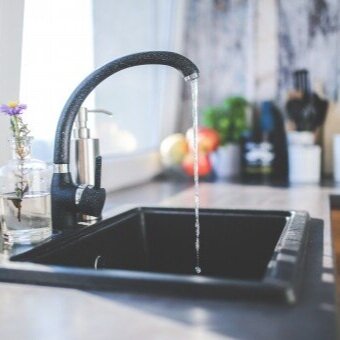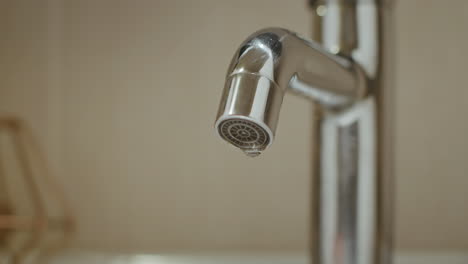An Consequence of Busted Faucets
An Consequence of Busted Faucets
Blog Article
Just how do you really feel about How to Fix a Leaky Faucet?

Introduction
A leaky faucet may feel like a minor inconvenience, however its effects expand far past the periodic drip. Understanding the impacts of a leaking faucet is vital for both home owners and the setting. In this post, we'll discover the numerous influences of this usual house problem and why addressing it immediately is important.
Reasons For Leaky Faucets
Leaking faucets can result from a variety of variables, consisting of deterioration, high water pressure, and deterioration. Over time, the constant use of taps can lead to worn-out seals and gaskets, causing leakages to establish. Furthermore, extreme water stress can place strain on plumbing components, leading to leaks. Deterioration and rust can likewise damage tap elements, making them susceptible to leakage.
Water Wastage
One of one of the most significant consequences of a leaking faucet is water wastage. Also a little drip can amount to gallons of drainage in time. This not only increases water bills yet also adds to water shortage and environmental destruction. Attending to leaky taps immediately is important for conserving this valuable resource and minimizing its effect on the planet.
Financial Impact
Along with wasting water, leaking faucets can additionally have a substantial financial influence. Boosted water bills are a straight repercussion of water waste, costing property owners thousands of dollars annually. In addition, the expense of repairing water damages brought on by leaks can be considerable, especially if left ignored for a prolonged duration.
Environmental Influence
The ecological influence of leaky taps expands beyond water wastage. By saving water, homeowners can add to broader efforts to mitigate water deficiency and shield all-natural environments. Sustainable alternatives such as rain harvesting and water-efficient fixtures can even more reduce the environmental footprint of house water use.
Technological Solutions
Advancements in modern technology have caused the development of smart taps and water-saving gadgets that aid minimize water wastage. Smart faucets utilize sensing units to detect motion and change water circulation as necessary, lowering waste without sacrificing comfort. Water-saving tools such as aerators and low-flow showerheads are likewise effective in preserving water without jeopardizing performance.
Worldwide Perspectives
While dripping faucets might appear like a local issue, they add to broader international challenges such as water deficiency and climate adjustment. In regions currently facing water anxiety, every decline counts, making leak avoidance and fixing vital. By taking on water-saving practices and buying sustainable innovations, homeowners can play their part in resolving these pressing worldwide concerns.
Regulatory Procedures
Federal government regulations play a vital role in minimizing the effect of dripping faucets and advertising water conservation. From constructing codes that need water-efficient components to water-saving incentives and rebates, policymakers have a variety of devices at their disposal. By implementing and imposing these guidelines, federal governments can ensure that homeowners focus on water conservation in their day-to-days live.
Neighborhood Impact
Attending to leaky taps needs collective initiatives at the community degree. By raising recognition about the relevance of water conservation and giving resources for leakage discovery and repair, neighborhood authorities can encourage homeowners to do something about it. Campaigns such as water-saving refund programs and leakage discovery campaigns can incentivize behavior change and promote responsible water usage.
Case Studies
Real-life instances of the influence of dripping taps highlight the value of aggressive upkeep and prompt repair work. From water damages to increasing water costs, the effects of ignoring leaks can be severe. By sharing these case studies, house owners can much better comprehend the relevance of attending to leaking faucets quickly.
Educational Campaigns
Educational campaigns play a crucial duty in increasing understanding about the effects of dripping taps and promoting water conservation practices. With workshops, seminars, and on the internet sources, home owners can find out how to spot and fix leakages themselves. By empowering people with knowledge and tools, academic campaigns can cultivate a culture of responsible water usage within neighborhoods.
Wellness Concerns
Leaky faucets can produce favorable settings for mold and mildew and mildew growth, positioning health and wellness dangers to owners. The presence of mold can intensify respiratory system concerns and allergies, especially in at risk individuals. Furthermore, water damages arising from leaks can compromise the structural stability of buildings and cause pricey repair work.
Do it yourself vs. Professional Fixing
When faced with a leaking faucet, home owners frequently dispute whether to try repair services themselves or employ an expert plumber. While do it yourself repair work can conserve money, they may not constantly address the underlying concern properly. Specialist plumbings have the knowledge and devices to identify and take care of leakages appropriately, guaranteeing long-lasting solutions and satisfaction for property owners.
Preventive Measures
Preventing leaky faucets calls for normal upkeep and positive steps. Easy tasks such as replacing worn-out washers and seals can prevent leakages from establishing. In addition, updating to high-quality components and lowering water stress can help lengthen the life expectancy of faucets and lessen the risk of leakages.
Final thought
In conclusion, the results of a leaky tap extend much beyond the occasional drip. From water waste and increased water costs to health problems and environmental influence, the consequences of overlooking leaks can be substantial. By dealing with dripping faucets without delay and adopting water-saving methods, property owners can minimize these effects and add to an extra sustainable future.
Why You Shouldn’t Ignore a Leaky Faucet in Your Home
What Causes a Leaky Faucet?
Various factors can cause a leak, from loose and worn-out parts to corrosion. Your faucet has four essential components from which most plumbing issues will stem: the O-ring, the valve seat, the washer and the gasket.
What Is an O-Ring?
The O-ring is a stem screw that fastens parts of the faucet in place, preventing water from leaking out of the spout. Depending on your faucet type, the stem might have multiple O-rings. Water will drip from the faucet’s handles and base if this part breaks or deteriorates.
What Is a Valve Seat?
The valve seat controls the flow and temperature of the water. Found at the base of the handle, it works as a seal for the faucet’s stem. The valve seat ensures the water is allowed to flow or is blocked as the handles dictate. You’ll know it’s malfunctioning when water leaks from your faucet’s sides.
What Is a Gasket?
The gasket is found between the water inlet and the valve stem. It creates a seal between the faucet and the sink, holding its joints by aerators attached to the stem’s head. Water will trickle out from the base if the gasket isn’t working.
What Is a Washer?
The washer secures the handles and prevents leakage, serving a similar purpose to the O-ring. While the O-ring is ordinarily round and made from an elastic material, such as rubber, the washer is square-shaped and composed of brass, copper and other hard metals. If it malfunctions, corrodes or has been improperly installed, water will leak out of the handles, causing that incessant faucet drip.
Why Is a Leaky Faucet Dangerous?
A leaky faucet left alone for too long can have significant consequences.
Pest Infestations
Since bugs and rodents gravitate towards the scent of water, a leaky faucet will draw pests to your sink. Both are looking for leaks accessible through crawl spaces, which a faucet provides. If you leave water dripping for too long, you run the risk of an infestation.
Rust
If one of the faucet parts has started to corrode, the resulting rust can spread to your pipes and valves with startling speed. The rust might even lead to cracks or other impairments, resulting in more severe plumbing issues.
Your sink could also sustain damage from a leaky faucet. The water in your tap possesses sparse elements of calcium and iron that can stain your sink with repeated and prolonged exposure. Once those elements in the water have been open to the air for some time, your sink will start to rust, creating marks that can be difficult to remove.
https://www.tomsmechanical.com/blog/why-you-shouldnt-ignore-a-leaky-faucet-in-your-home

I hope you enjoyed reading our section on How to Fix a Leaky Faucet. Thanks so much for finding the time to read our post. Feel free to pause to share this blog if you enjoyed reading it. We truly appreciate your readership.
Report this page